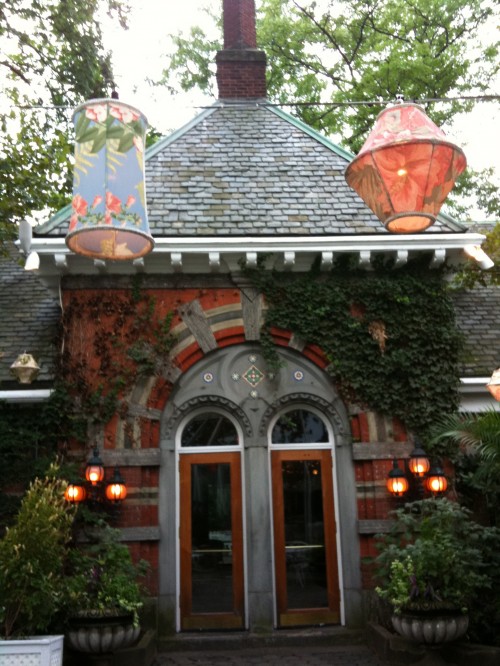Let’s hope they don’t open another bone boiling works…
Sad news: Tavern on the Green, a NYC institution and Central Park standard closed this past Friday. The place will be missed. I’ve eaten there a few times over the years, enjoyed the restaurant’s festive lights, stopped by the outdoor bar to have a glass of wine following a walk through Central Park this past summer.
But here’s the thing: Central Park is in a constant state of flux. Part of the genius of Olmsted & Vaux’s design is that Central Park can accomodate ample change and still remain, well, Central Park.
As it happens, the spot occupied most recently by Tavern on the Green was once home to a bone boiling factory, a grim Dickensian enterprise that used animals bones for a byproduct used in 19th century sugar refining. That was razed when the park was laid out in the 1850s.
During the Civil War, Olmsted decided that he didn’t want troops conducting drills in Central Park, which he viewed as a place of peace. So sheep were introduced into one of the park’s open spaces — to this day, called Sheep Meadow. The sheep needed a place to stay at night, so Jacob Wrey Mould — a masterful but under-heralded architect — designed a sheepfold in the this same spot.

Flash forward to the 1930s. NYC master-planner Robert Moses got sick of having to stop his car each morning to let a flock of sheep parade past. The sheep were exiled to a park in Queens (although there are more ominous rumors about their fate). The ever-enterprising Moses then decided the spot was perfect for a restaurant, which, owing to its prime location inside Central Park, would need to pay an ample fee to NYC. That restaurant was Tavern on the Green. In creating a restaurant, as you can see in the photo above, Mould’s original sheepfold was simply incorporated into the building.
And so it goes. Something new will surely soon appear on the grounds of the bone boiling works/sheepfold/Tavern on the Green. It will always be Central Park.